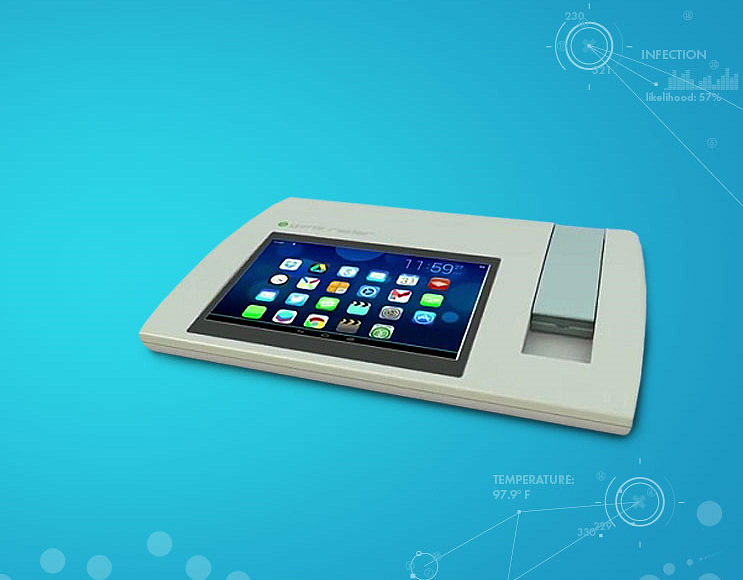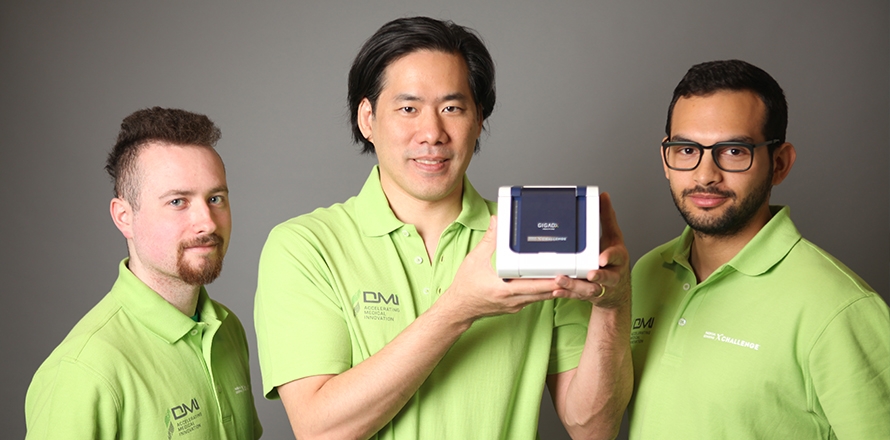
One of the greatest challenges of modern medicine is developing the necessary tools to make smarter and faster diagnoses, while at the same time being more cost-effective. As the largest segment of our population moves towards its retirement and budgets continue to shrink, the health care is best by the duel challenges of having to be more personalized while at the same time being more affordable.
Luckily, the explosive growth in recent years of wireless communications, digital technology, and wearable devices has made technology-driven solutions truly possible. A chief aspect of this is sensing technology - i.e. digital hardware and software that can monitor a person's health in real-time, trasmit it to a database, and allow for individual monitoring or sharing with health care professionals.
Hence why Nokia and the X Prize Foundation came together to create the the Nokia Sensing XCHALLENGE. Founded in 2012, this $2.25 million global competition was created to accelerate the development of hardware sensors and software sensing technology that individuals could use to access, understand, and improve their health and well-being.

In addition to addressing shrinking health care budgets, the Challenge also takes into account the growing need for medicine that is quick and readily available. At present, hospital machinery and laboratory tests are the primary means of obtaining medical information that could mean the difference between life and death. The process for obtaining this information is often very time-consuming, and always expensive.
Far worse is the situation in the developing world, where access to these sorts of tests and machinery is often very limited. Hence why personal sensors are seen as a viable solution. Aside from being portable and cheap by comparison, fitness sensors - such Apple Health, Google Fit, and the Jawbone UP - have already been shown to be very effective for obtaining body metrics and monitoring health in real-time.
In addition, computers and metadata-mining algorithms have been used for decades by NGOs and public health agencies to track the spread of epidemics and to make predictions about the appearance of diseases. Combining the two, and creating proprietary software that can make the information available at a glance on a smartphone, tablet or display device, is just the next logical step.

Towards this end, the Nokia Sensing XChallenge has teamed up with leading companies, startups and labs and is focused on the development of microelectrical mechanical systems (MEMS), imaging, and microfluidic and nanofluidic lab-on-a-chip systems that are small, accessible, and readily available.
These systems must also be able to inferface with devices, cloud computing, and must allow for real-time monitoring, peer support, and social networking. Also, the Challenge is focused on the development of machine-learning algorithms that can interpret the data and offer diagnostic and predictive abilities.
The Challenge was divided into two competitions with a prize purse of $1.125 million was made available for each. This consisted of two $525,000 Grand Prizes, and as well as up to five Distinguished Awards of $120,000. A total of 33 teams took part, representing companies, startups, and research labs from the US, UK, Japan, Israel, Switzerland and France.

Twelve teams took part in the first competition, which ran from August 2012 to November 2013, while the remaining eleven competed in the second, which ran from June to November 2014. The Grand Prize for the first competition went to Nanobiosym - a Boston-based research incubator, biomedical and nanotechnology institute - for their Health Radar system.
The system uses a nanochip that can analyze a drop of blood, saliva or other bodily fluid without the need of electricity or running water - making it ideal for use in developing countries. The chip is then inserted into a mobile device, which detects the presence or absence of a disease’s pathogen in less than an hour, with the same accuracy as a diagnostic lab.
The Grand Prize for the second competition went to the DNA Medical Insitite (DMI), a medical research company (also from Boston) for their Reusable Handheld Electrolyte and Lab Technology for Humans (rHealth) system. Much like the Health Radar, the system requires the patient to provide just a single drop of blood, which is then mixed with nanoscale test strips and streamed past lasers to process its for signs of disease or pathogens.

It comes accompanied by a wearable patch which is worn to monitor vital signs, such as breathing and heart rate, sharing data over Bluetooth with either the device or the user's smartphone. DMI has produced two other diagnostics instruments under the rHealth label, which were developed in collaboration with NASA for use by astronauts. One of these designs (the rHealth X1, shown above) is also a finalist for the Qualcomm Tricorder X Prize.
Other entries of note included the mDLS sensor by Elfi-Tech, an Israeli-based research company specializing in non-invasive medical technology. Their device monitors blood flow waveform at different locations on the body to gauge numerous physiological parameters such as heart rate, blood perfusion, blood pressure and different cardiac functions.
Also, the Swiss team Biovotion recieved a Distinguished Award for their Vital Sign Monitoring (VSM) system, a wearable computer that monitors vital signs - such heart rate and breathing - and is supported by integrated cloud services for data exchange and analysis. And then there is the Eigen Lifescience team from Stanford University, creators of a low-cost, portable device that is capable of testing for Hepatitis B in less than 10 minutes.
Without a doubt, the Nokia Sensing XChallenge accomplished what it set out to do two years ago - to encourage research groups from around the world to submit groundbreaking technologies that could improve access to health care. In the coming years, it is entirely possible that further challenges will be mounted, focusing perhaps on developments in nanotechnology, biotechnology, and embedded health sensors that track your health from inside your body.
And be sure to watch these promotional videos from the XPrize that showcase the winning team's concepts:
Team Nanobiosym's Health Radar:
Team DMI's rHealth:
Sources
- sensing.xprize.org/about/overview
- www.gizmag.com/x-challenge-diagnose-minutes-drop-blood/34700/
- www.medgadget.com/2014/11/nokia-sensing-xchallenge-2-winners-announced.html
- www.wired.com/2014/11/device-diagnoses-hundreds-diseases-using-single-drop-blood/
- www.engadget.com/2012/05/25/nokia-and-x-prize-put-medical-sensors-on-the-spot-for-next-chall/
- lumiaconversations.microsoft.com/2013/10/03/nanobiosym-win-grand-prize-in-nokia-sensing-xchallenge/
Image Credits:
- Top Image: xprize.org
- Jogger: xprize.org
- Health Radar: xprize.org
- DMI Team: sensing.xprize.org
- rHealth X1: tricorder.xprize.org








